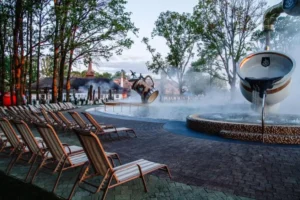
Zakarpattia Oblast is a region where nature itself has created ideal conditions for restoring health and peace of mind. Amid mountains and forests, hot mineral springs rise from the earth, famed for their healing properties since ancient times. It’s no wonder the area is called Ukraine’s wellness haven: the thermal resorts of Zakarpattia attract thousands of travellers each year who are seeking not just a break, but genuine rejuvenation.
During a soak in thermal pools, your body absorbs trace elements, circulation improves, muscle tension eases and the nervous system settles. Local waters contain sodium, potassium, calcium, magnesium, iodine, bromine and other beneficial substances, so the therapeutic effect is noticeable after just a few sessions. That’s why the thermal springs of Zakarpattia are considered among the finest in Eastern Europe.
Beyond their curative qualities, these places captivate with natural beauty and warm hospitality. Towns and villages retain an old-world spirit where mountain scenery blends with Hungarian, Slovak and Romanian cultural influences. Everyone finds something to love — from unhurried relaxation in warm waters to busy days of sightseeing and tasting local wines.
In this guide we’ve gathered the best-known thermal resorts of Zakarpattia — from popular Berehove and the modern Kosyno complex to picturesque Mukachevo, Velyatyno and Dovhe, as well as lesser-known yet wonderfully characterful Solotvyno, Uzhhorod and Lumshory. You’ll learn what makes each location special, which conditions the waters can help with, and how to plan your trip.
Benefits of thermal waters for the body
Zakarpattia’s mineral springs are a natural pharmacy that can help without medication:
- improve cardiovascular function;
- strengthen immunity and boost overall vitality;
- reduce symptoms of arthritis, osteochondrosis and sciatica;
- normalise sleep and relieve chronic fatigue;
- speed up recovery after injury or surgery.
When to go
You can visit the thermal springs of Zakarpattia year-round. In winter, hot baths are especially popular — the contrast between frosty air and warm water feels like a complete reset. In the shoulder seasons prices are lower, there are fewer tourists, and the benefits remain the same.
Berehove thermal waters — Zakarpattia’s unique wellness hub
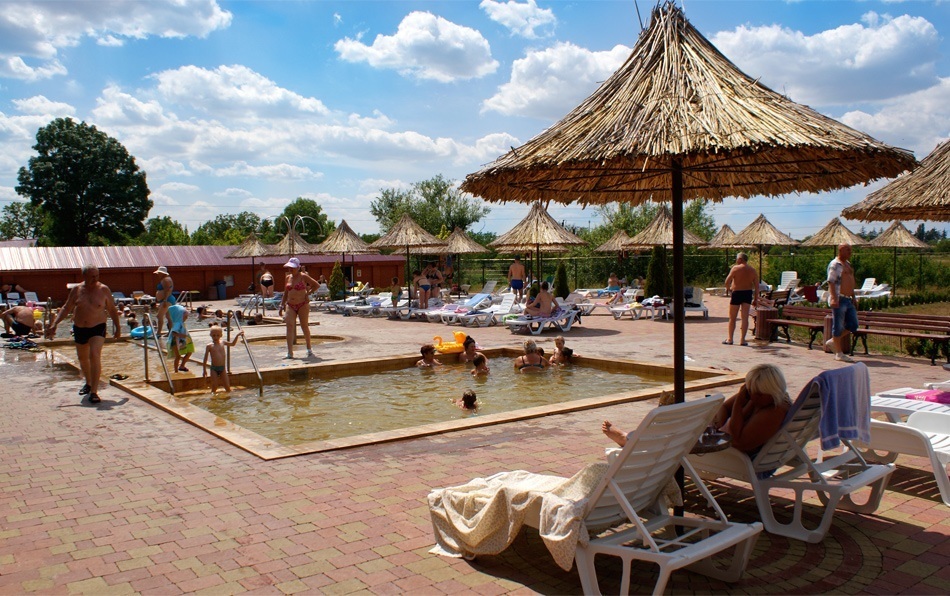
The town of Berehove is one of the best-known thermal resorts not only in Zakarpattia but in all of Ukraine. Compact yet wonderfully characterful, it sits close to the Hungarian border, lending it a special charm and a distinctly European feel. For many years the Berehove thermal pools have drawn visitors seeking natural wellness and tranquillity amid the scenic landscapes of the Carpathian region.
History and uniqueness of the springs
The first references to hot springs in Berehove date back to the 19th century. Locals noticed that water rising from depths of over 1,200 metres felt pleasantly warm and left a soft, slightly saline film on the skin. Later studies confirmed the water is rich in minerals, similar in composition to thermal sources in Iceland, New Zealand and the Kuril Islands. There are only four such springs worldwide with comparable chemistry — and one of them is here in Berehove.
Healing properties and composition
Berehove’s waters are highly mineralised, containing iodine, sodium, potassium, calcium, magnesium, silica and a small amount of radon. The temperature at the source reaches 60–70°C, while the pools are maintained at a comfortable 36–38°C. This combination helps to:
- improve circulation and metabolism;
- relieve joint diseases, arthritis and osteochondrosis;
- ease nervous tension and insomnia;
- support recovery after injuries and heavy exertion.
“Zhayvoronok” resort — the symbol of Berehove
The most popular place to bathe is the “Zhayvoronok” complex. It offers several open-air thermal pools, a spa area, hotel and a tasting room for local wines. Pools are filled with naturally hot water without additional chemical treatment, preserving the mineral properties. In winter it’s especially delightful to slip into steaming water with snow all around — the contrast delivers pure full-body relaxation.
Practical tips for visitors
- Stay in the water for 15–20 minutes at a time, then take a rest.
- For best results, aim for a course of 7–10 sessions in a row.
- Combine wellness with the old town, wine cellars and the local wine museum.
- Visit in the shoulder seasons — autumn or spring — for fewer crowds and better accommodation rates in Berehove.
Fun facts about Berehove
- The temperature of the thermal water is stable year-round, regardless of season.
- The town officially holds the status of a balneological resort.
- Berehove is famed for its Hungarian architecture and has the country’s oldest thermal pool, built in the 1950s.
A break in Berehove is more than bathing in hot water. It’s a blend of cosiness, culinary discoveries, culture and natural wellness that leaves you calm and centred.
Kosyno thermal waters — a Zakarpattia gem among the oaks

A few kilometres from Berehove, amid picturesque oak forests, lies the village of Koson — home to the renowned “Kosyno Thermal Waters” wellness centre. This modern recreation complex of European calibre harmoniously combines the power of mineral springs with the comforts of a contemporary spa break. It’s the perfect place to experience total relaxation of body and peace of mind.
Origin and composition of the thermal water
Kosyno’s thermal springs rise from depths of over 1,500 metres. The water is chloride–sodium in type with high levels of potassium, calcium, iodine and iron. Its natural temperature reaches 60–80°C, and after cooling to a comfortable 36–40°C it’s ideal for therapeutic bathing. By many measures Kosyno’s water is second only to the famous Hungarian thermal resorts, as confirmed by numerous tests and analyses.
Wellness effects and benefits
Thanks to moderate mineralisation and a balanced composition, the water:
- supports cardiovascular health;
- relieves muscle tension, fatigue, stress and insomnia;
- aids in dermatological and neurological conditions;
- helps with arthritis, radiculitis and joint issues;
- improves metabolism and helps detoxify the body.
“Kosyno” complex — nature meets modern comfort
The complex spans over 8 hectares and includes five thermal pools, a water park, saunas, a salt room and relaxation areas. A signature feature is its themed fountains shaped like a coffee cup, wine glass, beer, champagne and brandy — each symbolising Zakarpattia’s culinary traditions. Pools operate year-round and water remains above 36°C even in winter.
How the resort developed
The idea for a thermal centre appeared in the early 2000s, aiming to combine natural riches with modern visitor facilities. Within a few years the Kosyno Resort became one of Zakarpattia’s calling cards — welcoming Ukrainians as well as guests from Poland, Hungary, Slovakia, Romania, France and beyond. The Kosyno resort continues to expand with new spa zones, additional hotel rooms in Kosyno and tranquil spaces immersed in nature.
Tips for your visit
- Alternate bathing and rest — 15–20 minutes in water, then at least 30 minutes’ break.
- Bring a bottle of water — thermal sessions can be dehydrating.
- For weekends or holidays, book tickets and accommodation in Kosyno in advance — it’s very popular.
- Nearby you can visit the Berehove Castle, wine cellars and local wineries.
A getaway to Kosyno blends wellbeing with visual pleasure. Warm water, the scent of oak forests and the hush of nature create an atmosphere you won’t forget — often described as the “golden mean” between European comfort and Ukrainian soul.
Mukachevo thermal pools — “Latorytsia” wellness complex
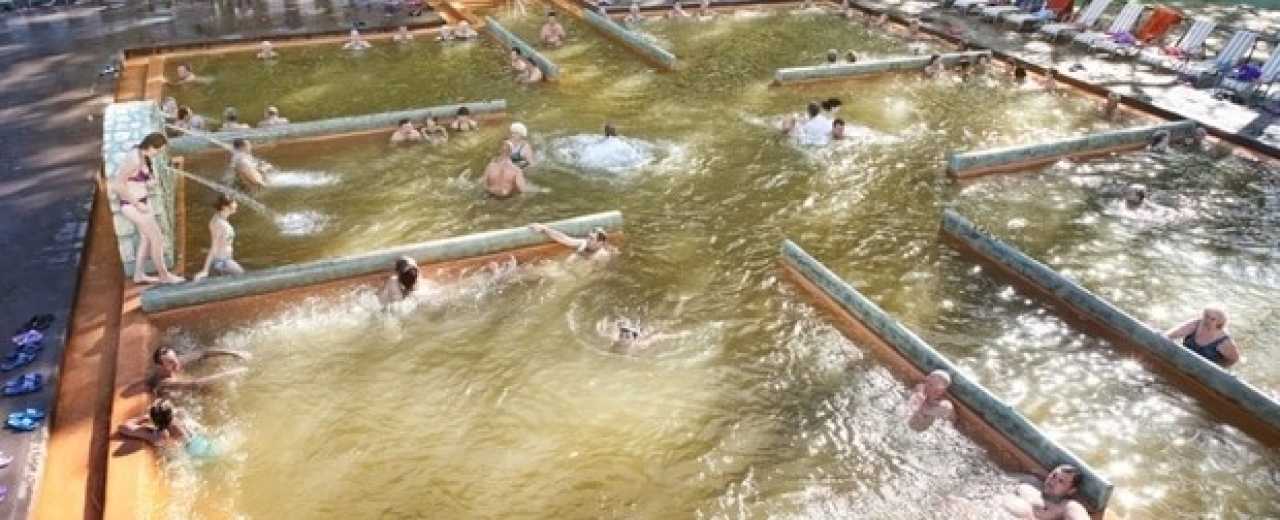
Mukachevo is not only an historic town crowned by the majestic Palanok Castle, but also a hub of health tourism. Here you’ll find the popular “Latorytsia” medical and recreation complex, known for its thermal pools and sulphurous springs — ideal for pairing active sightseeing with restorative downtime.
History of the thermal complex
The “Latorytsia” complex appeared in the 1980s as a sports and wellness centre for locals. As regional tourism grew, it was renovated and opened to all. Water feeding the pools comes from geothermal wells over 1,000 metres deep and offers unique therapeutic qualities.
Composition and healing effects
Mukachevo’s thermal water is sulphide in type, with high sodium and bicarbonate levels and a small amount of radon. Temperatures hover around 40–45°C. Bathing helps to:
- normalise nervous system function;
- improve skin and joint condition;
- reduce inflammation and muscle pain;
- stabilise blood pressure;
- strengthen immunity and overall tone.
What to expect at “Latorytsia”
The site offers indoor and outdoor pools, saunas, a phyto-bar, spa areas, sports courts and a hotel. In winter the water stays hot, so you can visit year-round. Visitors praise the relaxed vibe — it’s cosy, clean and pleasantly unhurried.
Interesting facts about Mukachevo
- Mukachevo’s thermal springs are natural in origin — the wells were discovered during 1960s geological surveys.
- The complex is named after the Latorytsia River that flows through town.
- Mukachevo is often called the heart of Zakarpattia — crossroads to Berehove, Uzhhorod and Svalyava.
Tips for visitors
- The best time to visit is autumn and spring, when air temperatures suit contrast bathing.
- After your session, stroll the old town and be sure to climb up to Palanok Castle.
- For families, there are dedicated children’s zones and warmer shallow pools.
The blend of Mukachevo’s historic architecture, natural springs and the homely feel of “Latorytsia” makes this a special place. It’s easy to recharge, drop stress and simply enjoy a mountain-town escape.
Velyatyno thermal springs — “Tepli Vody” resort
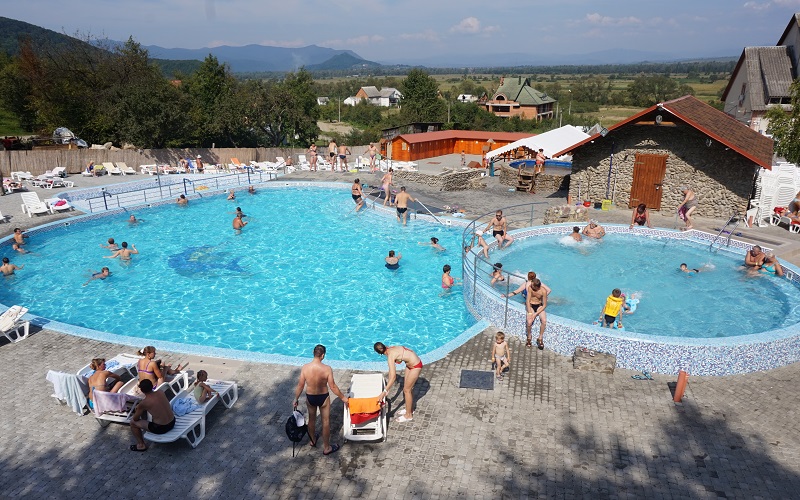
In the south of Khust Raion, amid rolling hills and river valleys, lies the charming village of Velyatyno. It’s home to the nationally renowned “Tepli Vody” thermal complex, rightly considered one of the best places for relaxation and recovery. Velyatyno draws visitors with its calm atmosphere and waters whose composition is unique within the region.
Origin and composition
Velyatyno’s hot springs were discovered by chance during drilling in the 1970s. At around 1.5 km deep, a powerful aquifer was found with temperatures above 60°C. Analyses show elevated levels of bromine, iodine, calcium, sodium and bicarbonates — delivering a calming effect, supporting the nervous system and easing stress.
Therapeutic benefits of “Tepli Vody”
Soaking in Velyatyno’s thermal pools can help:
- reduce chronic fatigue, insomnia and irritability;
- normalise blood pressure and support heart function;
- ease inflammation in joints and muscles;
- improve skin elasticity and tone;
- strengthen overall recovery after illness or surgery.
What the “Tepli Vody” complex offers
The site features several thermal pools at varying temperatures, from 30 to 38°C, plus children’s pools, a sauna, hotel, café and picnic area. Water is piped directly from the well and only mechanically filtered, with no chemical treatment — preserving its natural mineral composition and benefits.
History and development
Since the 1980s, “Tepli Vody” has grown from a modest health post into a modern recreation centre. Thousands of guests come each year from across Ukraine and abroad. The Tepli Vody resort continues to expand with new hotels in Velyatyno, improved infrastructure and spa rituals based on local water and clay.
When to visit
A Velyatyno break is perfect from April to October, when open-air pools shine amid Carpathian greenery. In winter, a hot soak has its own magic — warm water against crisp mountain air feels wonderfully renewing.
Traveller tips
- Avoid cosmetics before bathing — they can reduce mineral absorption.
- Rest at least 20 minutes afterwards and drink warm tea or water.
- For a full reset, plan 7–10 bathing sessions.
- On weekends and holidays, arrive early — pools fill up by afternoon.
Velyatyno’s thermal springs offer more than relaxation — they restore inner balance. Body and mind unwind while the Carpathians hum a gentle soundtrack to your reset.
“Borzhava” Sanatorium, Zakarpattia
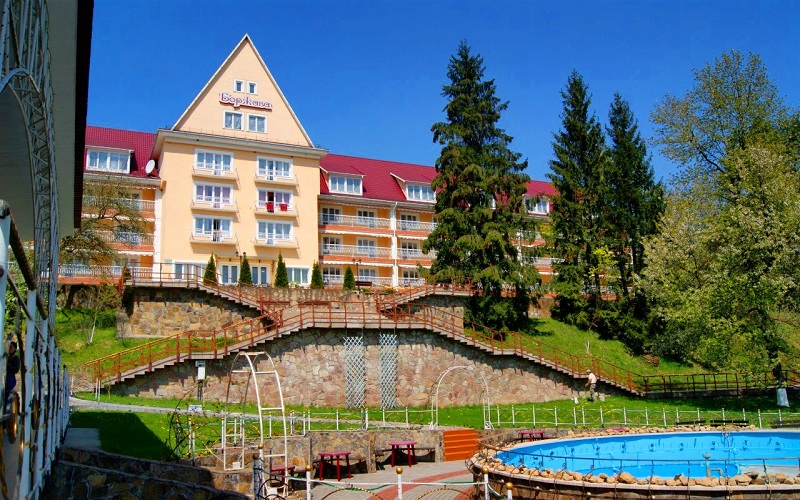
Amid the enchanting landscapes of Irshava Raion, close to scenic mountain ridges, lies the historic village of Dovhe. It’s known not only for heritage and architecture, but also for unique thermal springs that underpin the “Borzhava” Sanatorium. Visitors value its tranquillity, clean air and the special energy that helps restore health and emotional balance.
Origin and characteristics of the springs
Dovhe’s thermal sources were found while searching for drinking water in the mid-20th century. At depths beyond 800 metres, geologists discovered a powerful mineral-water spring of moderate mineralisation. Temperatures are 38–42°C, and the water contains sodium, calcium, magnesium and carbon dioxide — elements with notable therapeutic effects, especially for cardiovascular and musculoskeletal systems.
“Borzhava” — a wellness heritage site
Operating since the 1970s, “Borzhava” remains one of the region’s best-known health resorts. It specialises in treating cardiovascular conditions, arthritis, neuroses and metabolic disorders. Beyond thermal pool bathing, treatments include mineral baths, aromatherapy, physiotherapy and therapeutic massage courses.
Nature around Dovhe
The area feels like a vast natural park. Fresh mountain air, meadows, forests and the Borzhava River create a peaceful setting. Nearby are two of Zakarpattia’s natural wonders — Shypit Waterfall and Lake Synevyr. Each lies just a few dozen kilometres away and perfectly complements an escape to the Carpathians. Visit to feel the region’s true spirit — harmony, quiet and the pristine beauty of mountain vistas.
Who the treatments suit
Thermal procedures at Dovhe are recommended for those with:
- hypertension and other cardiovascular diseases;
- joint and spine disorders, rheumatism;
- metabolic issues or elevated blood sugar;
- stress, exhaustion and sleep disturbances;
- low immunity or general fatigue.
Facilities and leisure
The sanatorium has its own medical centre, thermal pools, spa area, gym and relaxation rooms. Guests can join guided walks to local sights, wine tastings and introductions to traditional cuisine. Evenings often feature live music, and the surrounding hills invite gentle strolls and photoshoots among Carpathian panoramas.
Traveller tips
- Before starting a course of thermal treatments, consult a doctor to tailor your bathing regime.
- In summer, book well ahead — rooms are often reserved weeks in advance.
- Pair treatments with short trips to waterfalls, mountain lakes or the wine cellars of Berehove district.
“Borzhava” in Dovhe is where time slows and worries fade. Warm water, clean air and the harmony of nature create perfect conditions for healing body and soul.
Solotvyno — Zakarpattia’s thermal springs and salt lakes
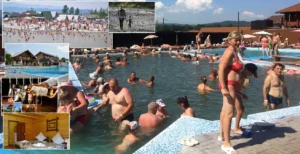
Nestled in the valleys of Tiachiv Raion, Solotvyno is one of Zakarpattia’s signature spots for wellness breaks. Its reputation rests not only on thermal waters but also on salt lakes formed in abandoned mines. Solotvyno is often compared to the Dead Sea — the water is so saline that you float effortlessly.
History and natural features
The first records of Solotvyno’s salt mines date to the 15th century. They supplied salt to the region and neighbouring countries. After mining ceased, mineral-rich lakes formed in the sinkholes. Scientific studies confirm their unique qualities — the waters contain sulphates, chlorides, iodine, bromine, calcium and magnesium, which are highly beneficial.
Wellness effects
A stay in Solotvyno helps with respiratory, skin, musculoskeletal and nervous system issues. Salt baths work similarly to those at Israeli therapeutic resorts. Visitors often report better sleep after bathing, reduced tension, easier breathing and an overall sense of wellbeing.
Solotvyno’s thermal waters
Besides the salt lakes, Solotvyno also has thermal springs feeding local pools. Water temperatures range from 35 to 40°C, and its mineral composition supports cardiovascular and neurological health. Many travellers combine hot-spring bathing with visits to former salt mines for speleo-therapy — inhaling saline air to cleanse the lungs.
Nature and nearby highlights
Zakarpattia abounds with natural marvels. Just a few dozen kilometres away lies a genuine phenomenon — the geyser in Vuchkove village. Dubbed the “Carpathian wonder”, it erupts with jets of 80°C water like a natural fountain. The trio of salt lakes, thermal springs and a geyser makes this corner of Ukraine truly unique.
Facilities and conditions
Solotvyno offers several resorts and guesthouses with thermal pools, saunas, salt rooms and medical services. The best known include “Elita”, “Solotvyno Resort” and “Crystal Springs”. Most operate year-round; in summer, the lakeside is perfect for sunbathing, swimming and enjoying the therapeutic microclimate.
Traveller tips
- For best results, bathe for 15–20 minutes and then rest for at least half an hour.
- Avoid submerging your head — the high salinity can irritate the eyes.
- Pair your stay with a trip to the Vuchkove geyser or other Carpathian natural landmarks.
- For families, the most convenient time is late May to early September.
Solotvyno is a rare meeting of water, earth and salt. Here you can heal the body, clear the lungs, restore energy and reconnect with nature. Zakarpattia is rightly called a land of wonders — one dip in a salt or thermal pool might be all the proof you need.
Uzhhorod — thermal baths, sakura and an ancient castle at Ukraine’s edge

Uzhhorod is where Ukraine both begins and ends. There are no noisy mega-resorts here — instead you’ll find calm, the aroma of coffee, blossoming sakura and warm springs carrying health and harmony from deep underground. That’s why the thermal baths of Uzhhorod are gaining popularity among travellers seeking a soulful, nature-rich, unhurried escape.
A border city with a European heart
Uzhhorod lies just a few kilometres from Slovakia. Its streets resemble a small European town: narrow lanes, historic townhouses and cosy cafés scented with chocolate. Above all, there’s a sense of ease — people breathe deeply and savour the moment. For this reason, tourism in Uzhhorod strikes a balance between urban energy and the peace of nature.
Uzhhorod’s thermal baths — warmth that heals
While Uzhhorod isn’t as famous for hot springs as Berehove or Kosyno, its outskirts host modern mineral-water complexes heated by natural warmth from over a kilometre underground. Water temperatures reach 35–38°C, and the composition is chloride–sodium with calcium, magnesium and iodine. Such baths help to:
- shake off fatigue after Carpathian road trips;
- boost circulation and improve skin condition;
- calm the nervous system after stress;
- support immunity and restore energy.
Evenings are especially charming: bells drift from the old town, lamplight shimmers on the water and the sky fills with stars — more than a therapy session, it’s a full reset.
Sakura season, once a year
Each spring, Uzhhorod turns into a blossom-filled dream. Boulevards along the Uzh River, squares and courtyards blush pink. The city is perfumed with spring and celebration. The sakura bloom has become the city’s signature — thousands come to see petals float above old rooftops as the city seems to breathe beauty and calm.
It’s the ideal time to combine nature’s show with an Ukrainian wellness break: a thermal soak in the morning, blossom walks by day and a cosy Uzhhorod café with local wine by evening.
The city’s emblem — Uzhhorod Castle
No trip to Uzhhorod is complete without its crown jewel — Uzhhorod Castle. Its fortress walls have seen princes, counts and soldiers stand guard over the city. Today it welcomes visitors with museums, archaeological displays and sweeping views. From the terraces you can gaze over the river, sakura and thermal baths steaming on the horizon — history you can feel in the air.
What else to see and taste
After bathing and a castle wander, simply meander the centre. You’ll find cafés, wine cellars and craft shops at every turn. Don’t miss classic Zakarpattia dishes: bograch, lekvar, banosh and homemade wines. Come evening, street music floats above the city as the sun slips away.
Traveller tips
- Plan for spring or autumn — mild weather, fewer crowds and the most pleasant baths.
- After the water, stroll the embankment — the calmest place in Uzhhorod.
- Don’t miss sakura season — perfect for photos and inspiration.
- Travelling with family? Choose a hotel in Uzhhorod with its own thermal tub — there are several.
Uzhhorod is more than a border town. It’s a fusion of history, warmth and harmony. Everyone finds something here: thermal-pool wellness, sakura romance or the quiet of ancient walls. A break in Uzhhorod is the kind of place you return to — where true rest begins with a feeling of inner warmth.
Lumshory — thermal cauldrons in the heart of the Carpathians
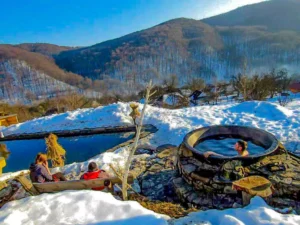
If you want to feel the essence of Zakarpattia — its spirit, calm and pristine nature — head to the village of Lumshory. Here, hot water from the earth meets crystal-clear mountain air. People don’t just bathe here — they purify. Lumshory has become a symbol of Carpathian wellness breaks and a favourite for those who value quiet, authenticity and Zakarpattia traditions.
History and the unique “chany” of Lumshory
Bathing in iron cauldrons of hot mineral water dates back to the 18th century. Shepherds noticed their joint pains eased after soaking in springs, and strength returned. Simple bathhouses appeared, later evolving into modern thermal complexes. Today the cauldron bath in Lumshory is a full ritual: an iron vat set over a fire is filled with mineral water at about 40°C. Nearby, a cold mountain stream beckons for a plunge after the heat. The contrast is so bracing it feels as if your heartbeat syncs with the landscape.
Healing water from the Carpathian core
Lumshory’s mineral water contains hydrogen sulphide, calcium, magnesium and silica. It eases joint pain, improves skin condition, supports detox and balances metabolism. Treatments are especially helpful for arthritis, rheumatism, musculoskeletal issues and stress disorders. Most of all, the effect is emotional as well as physical — after a cauldron soak a deep calm arrives, as if the mountains themselves lift away your fatigue.
Lumshory today
Modern Lumshory thermal baths bridge authenticity and comfort. Choose an open-air cauldron facing a waterfall, aromatic soaks, massage, or visit an old-style bathhouse preserved as it was a century ago. Some bases even offer stargazing night baths — just steam, silence and the whisper of mountain wind. It’s an experience that lingers.
Nature and atmosphere
The village lies in the valley of the Turychka River, ringed by beech forests and hills. Winter brings a muffled hush; spring, sweet blossom; summer, lush green and cool streams. Lumshory is ideal for walking, photography or simply being still. A few kilometres from the baths, trails lead to high meadows with views you won’t forget.
First-timer tips
- Limit each cauldron session to 20 minutes and alternate with a cold dip in the stream.
- Bring a towel, warm layers and drinking water — detox continues after bathing.
- Autumn and winter offer the most striking temperature contrast.
- Pair your soak with local flavours — bograch, mushroom soup or homemade wine.
Lumshory is more than a thermal resort; it’s a place of strength where time slows. Words aren’t needed — just hot water, mountains and sky. Standing on cool stone in a light mist after bathing, life feels simpler, brighter, warmer. It’s the closing note of a journey through Zakarpattia that leaves you calm — and keen to return.



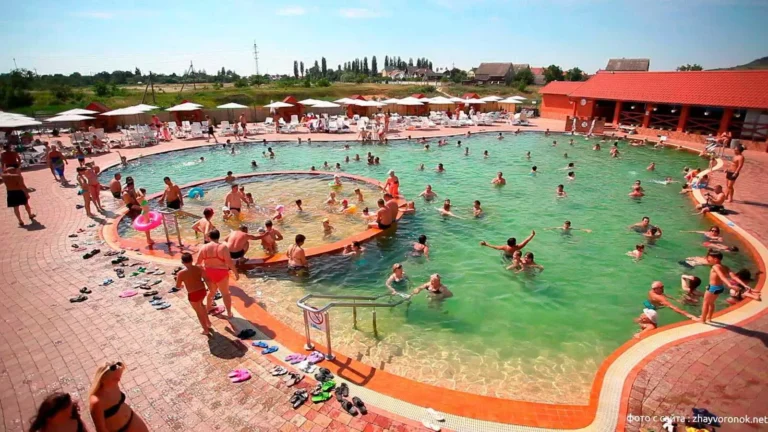
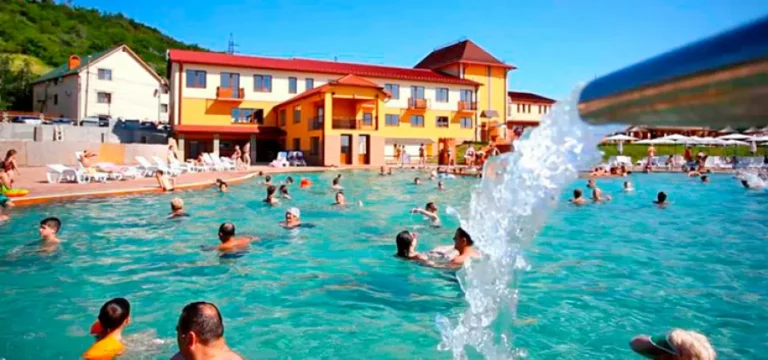
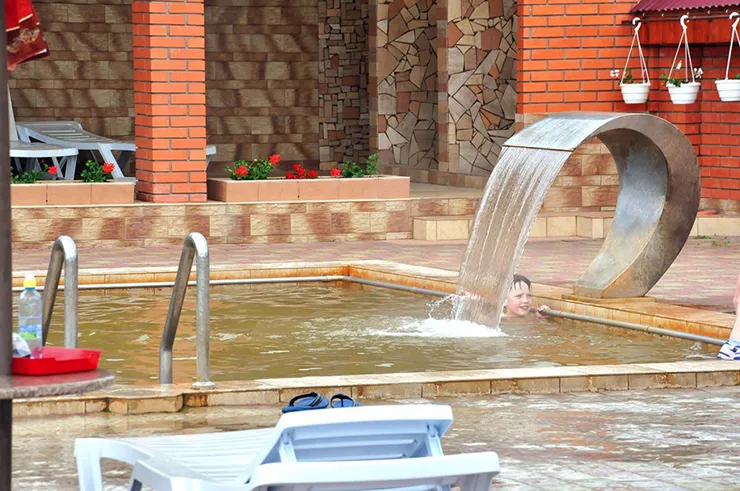
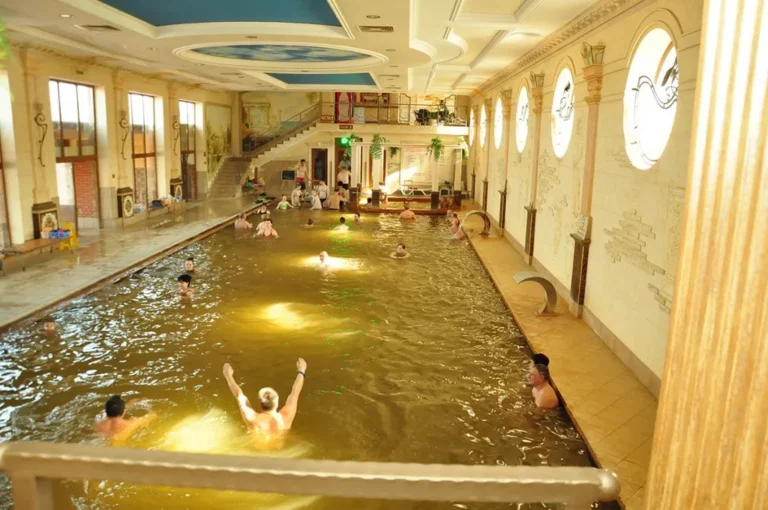
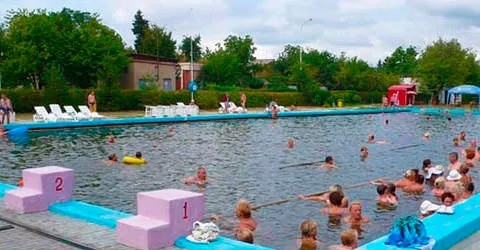


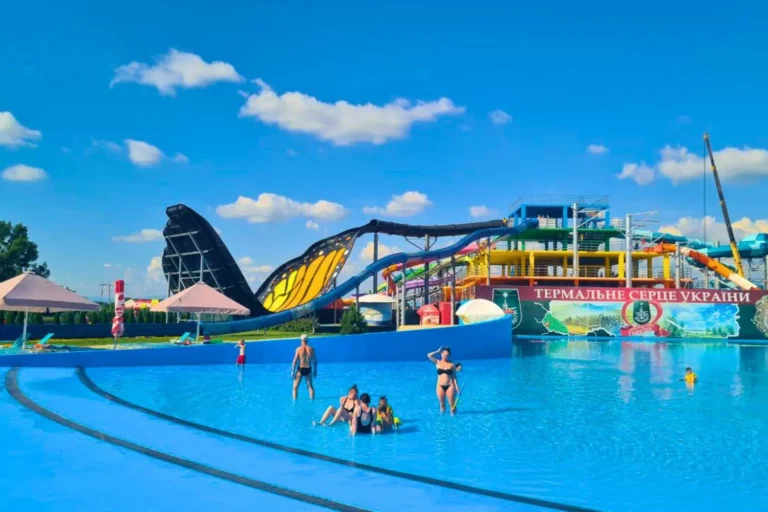
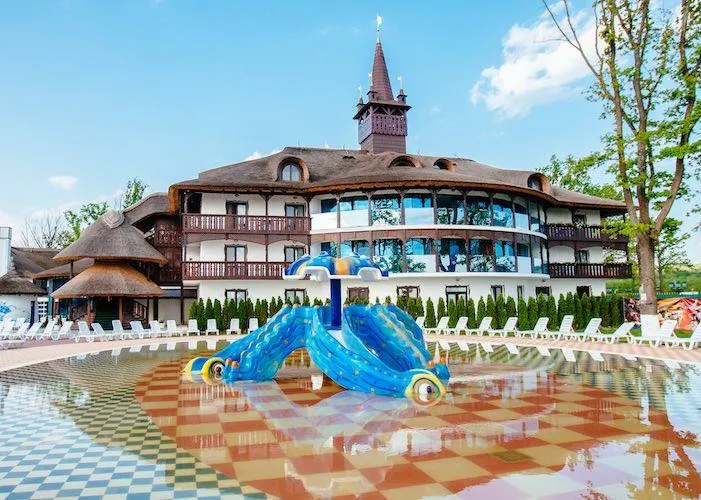

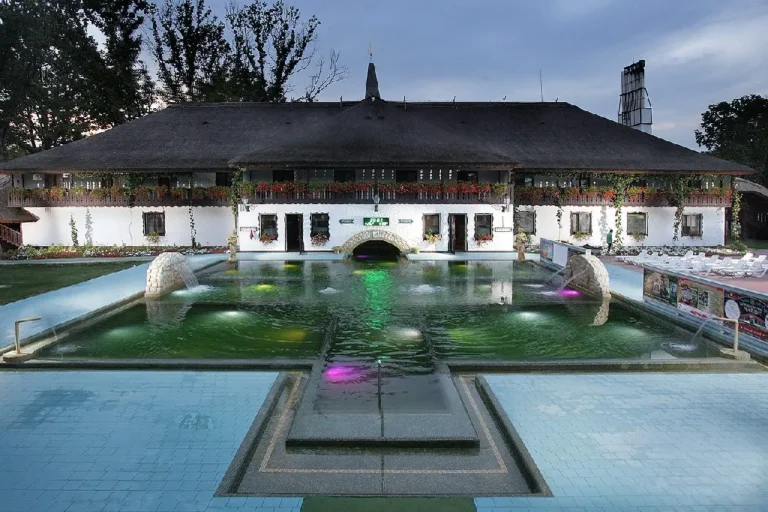
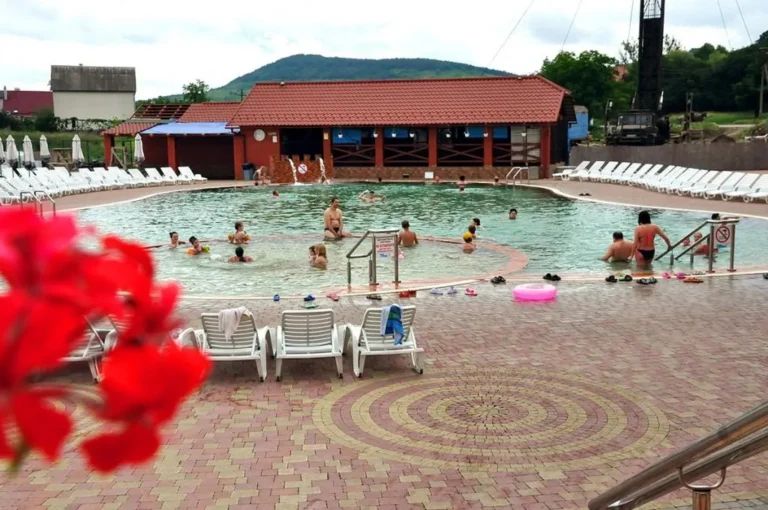
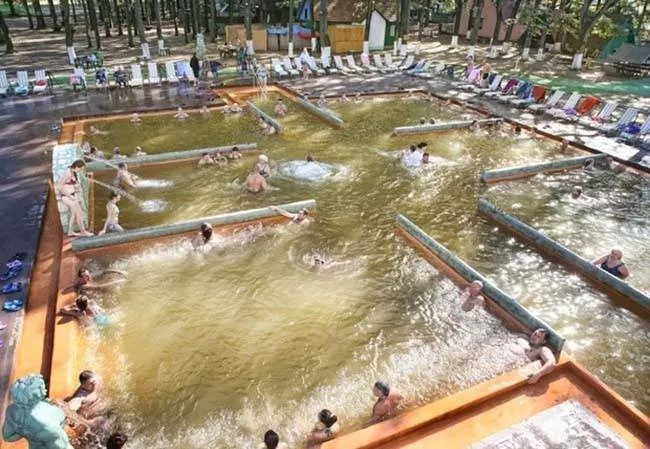
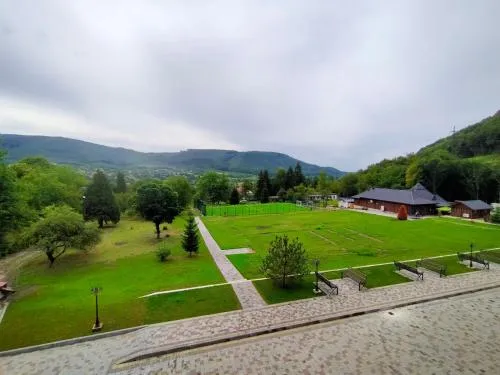
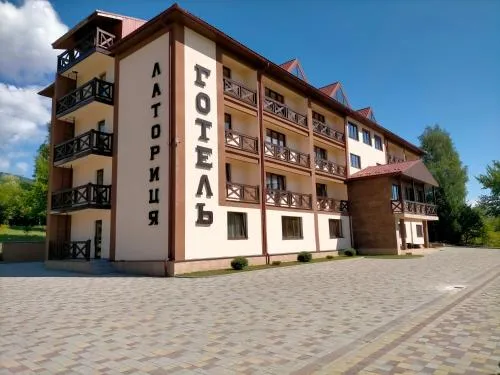


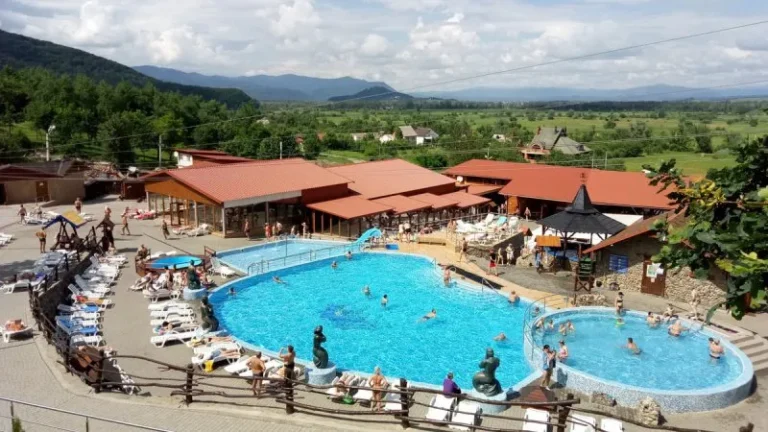


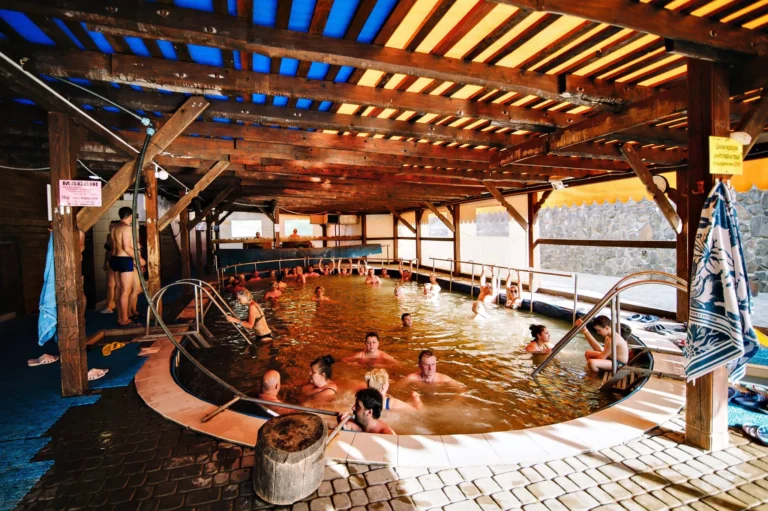






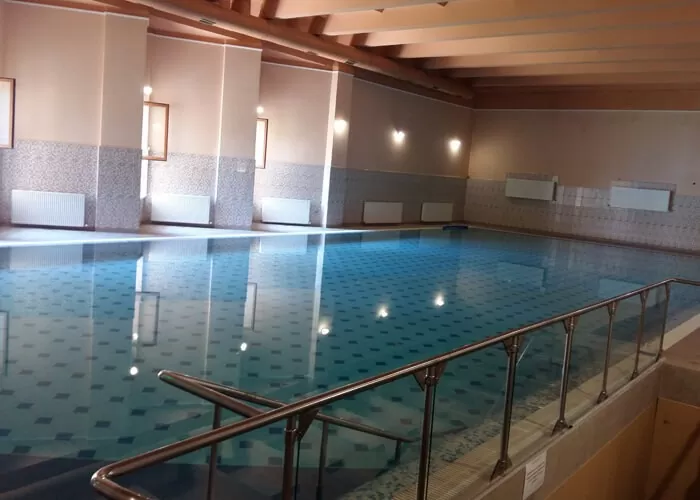
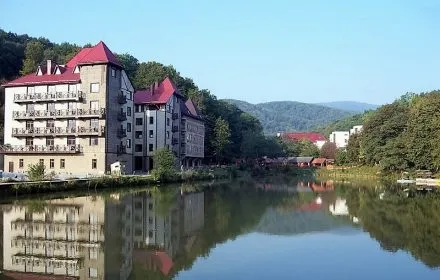
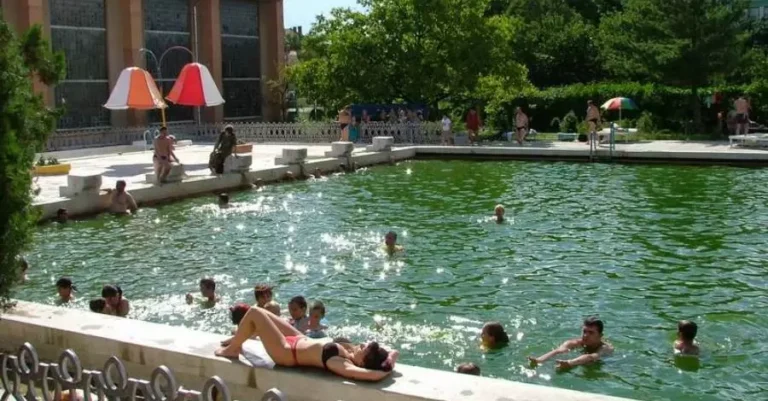
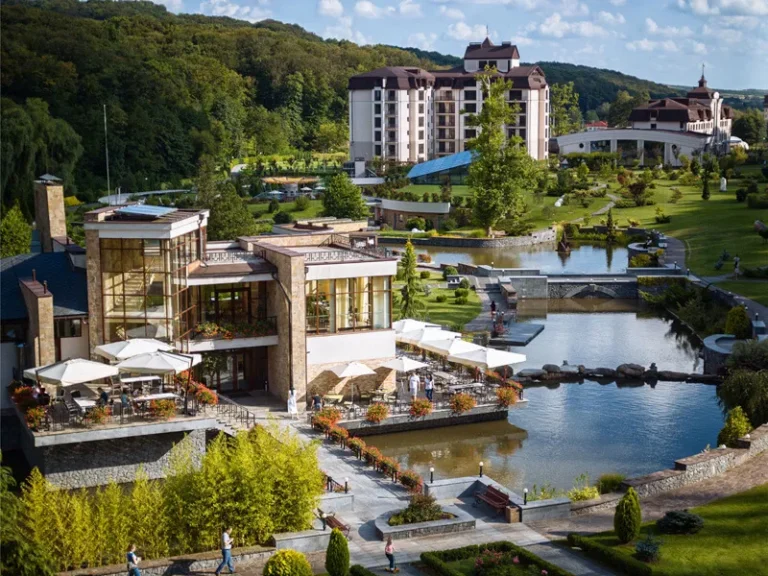
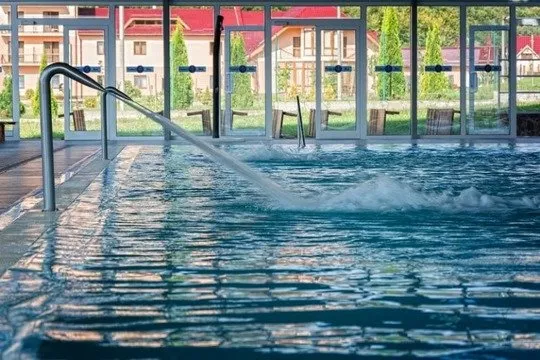
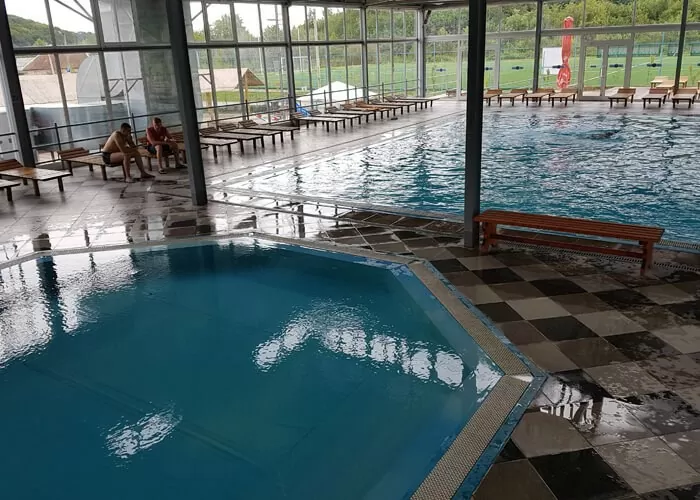
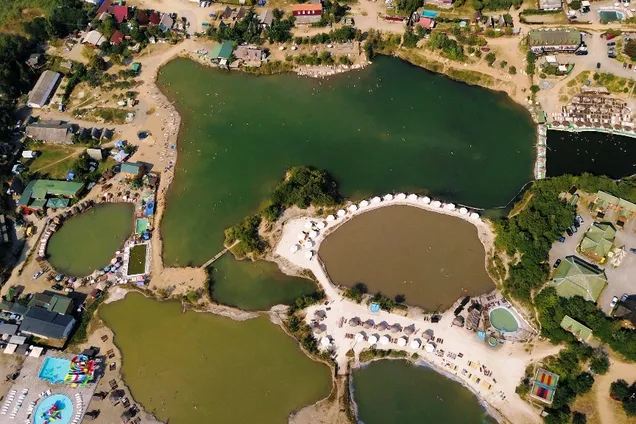
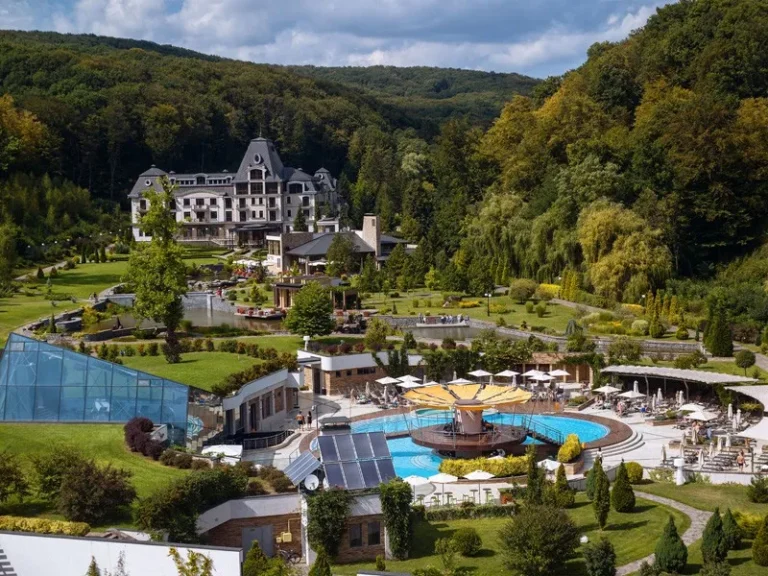
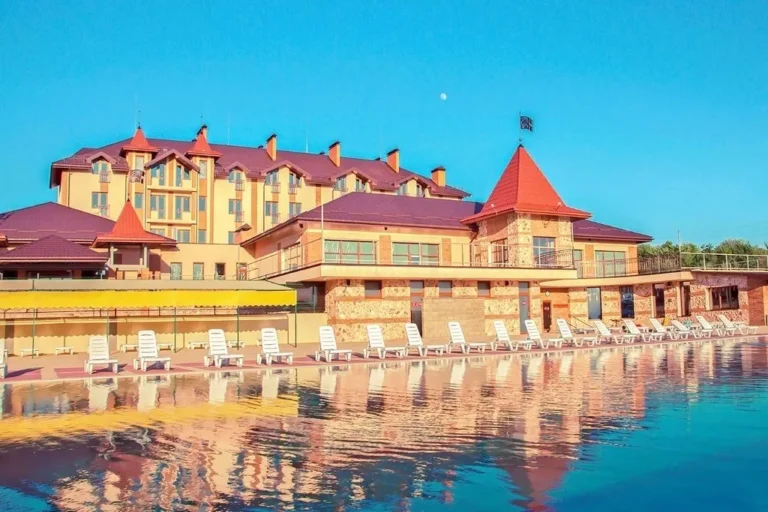



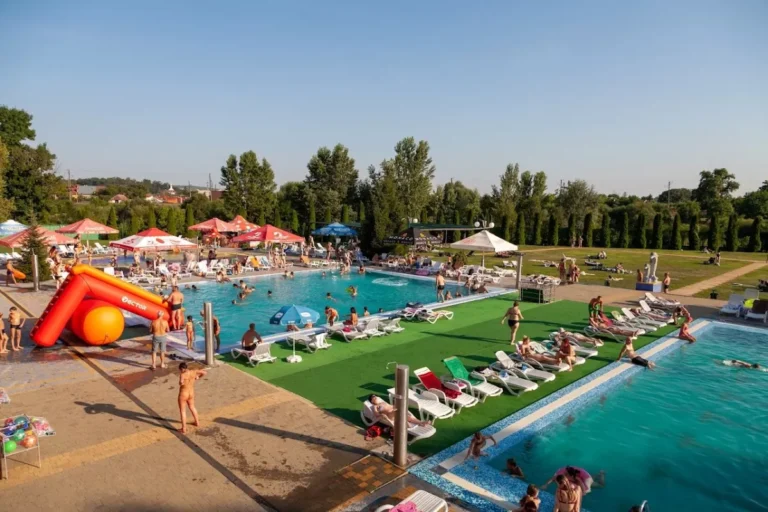
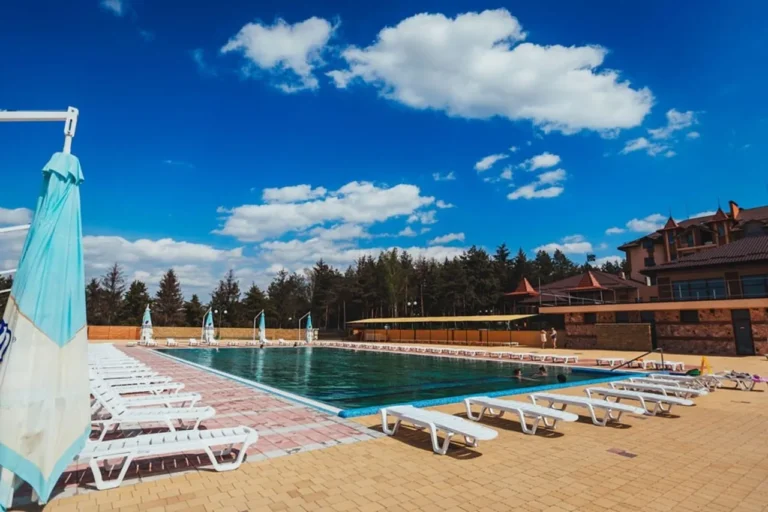
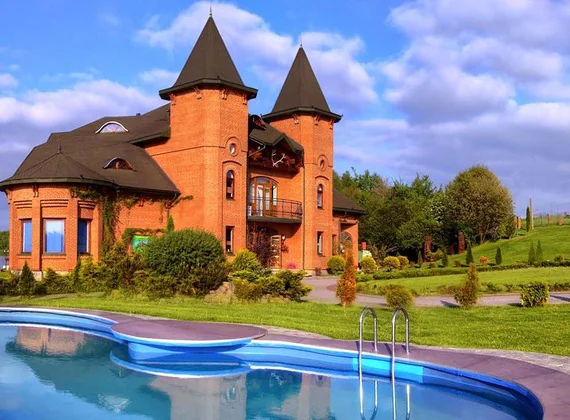

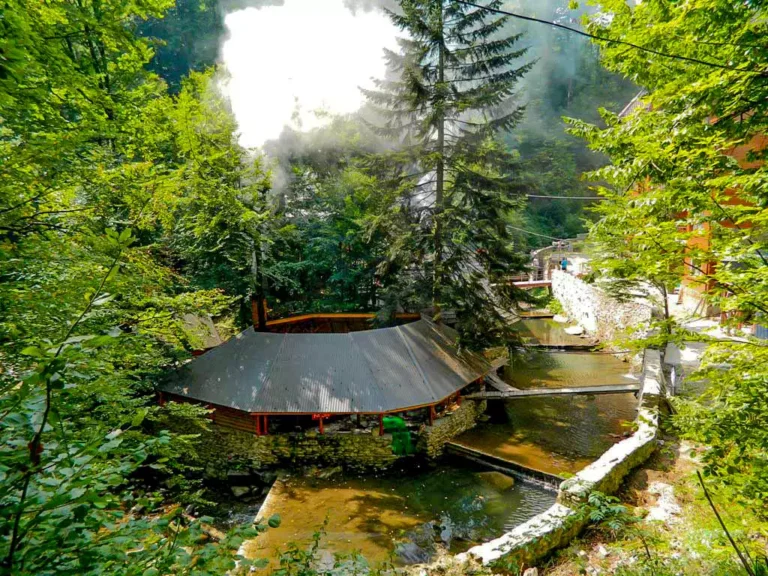
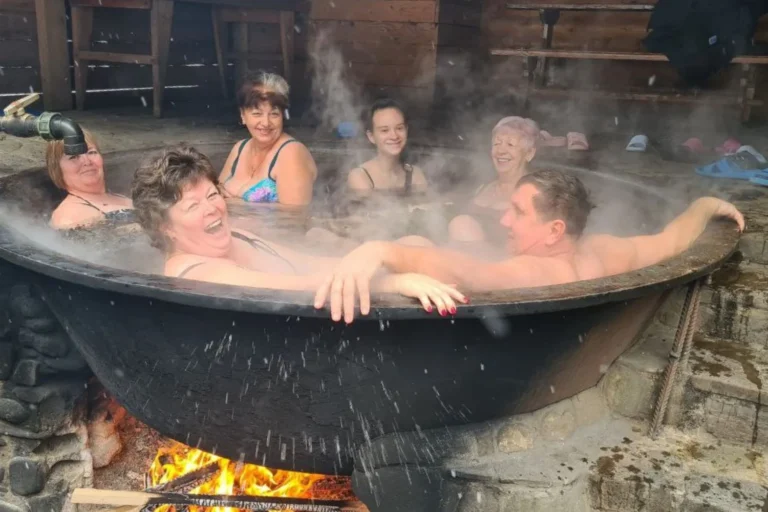
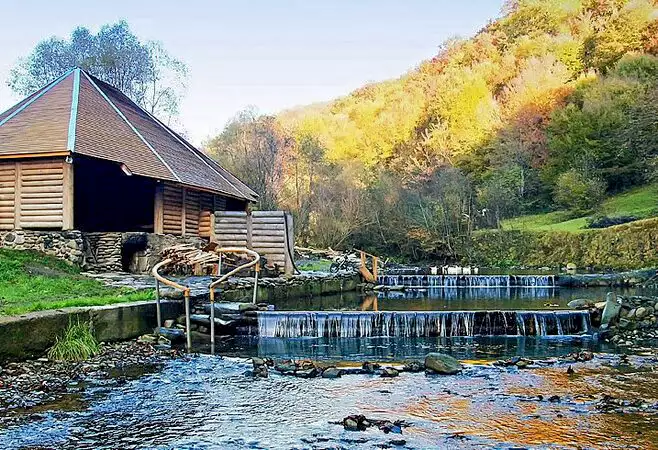
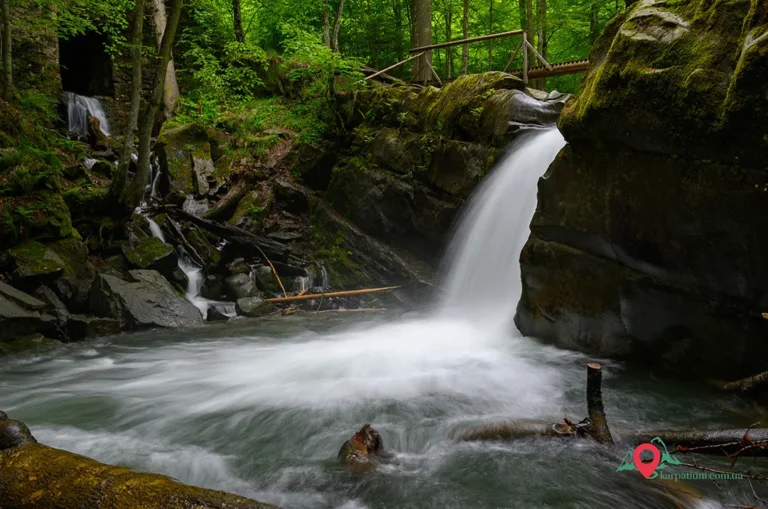

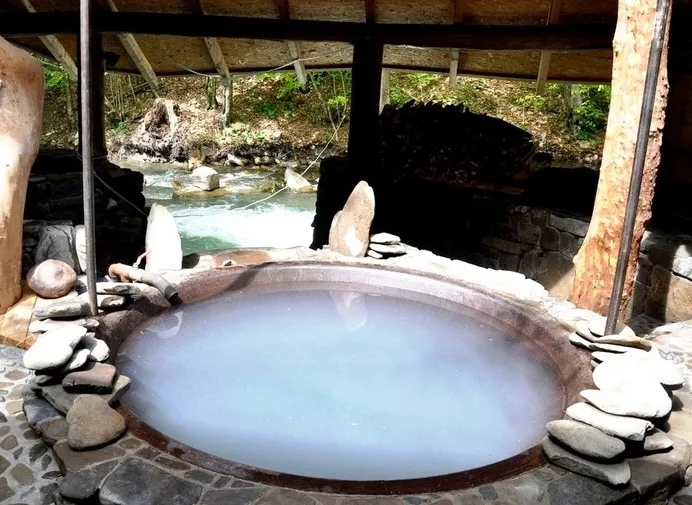


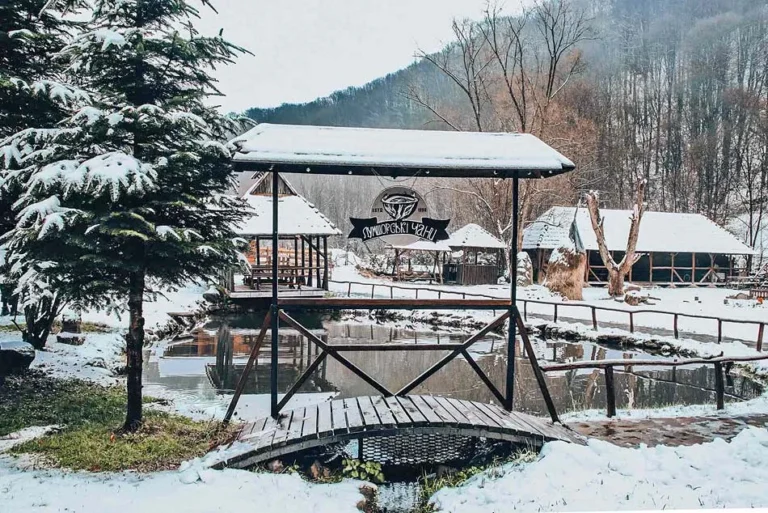

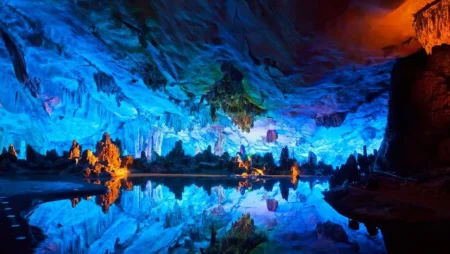

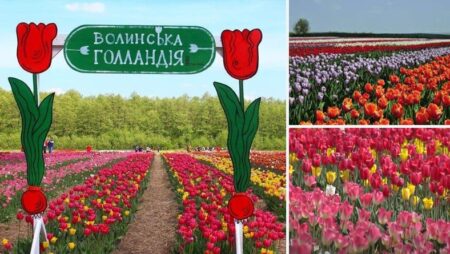
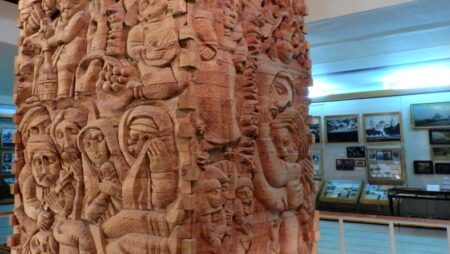

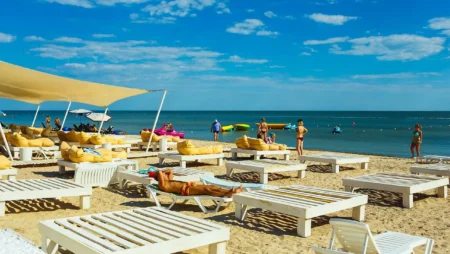
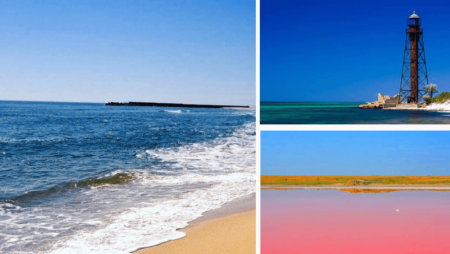
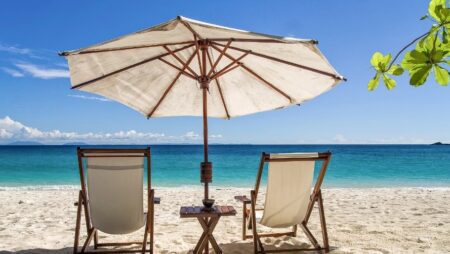
No Comment
You can post first response comment.